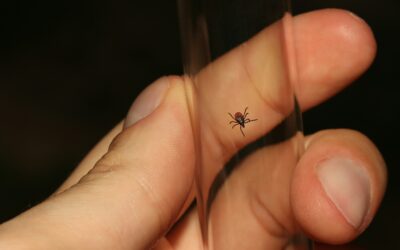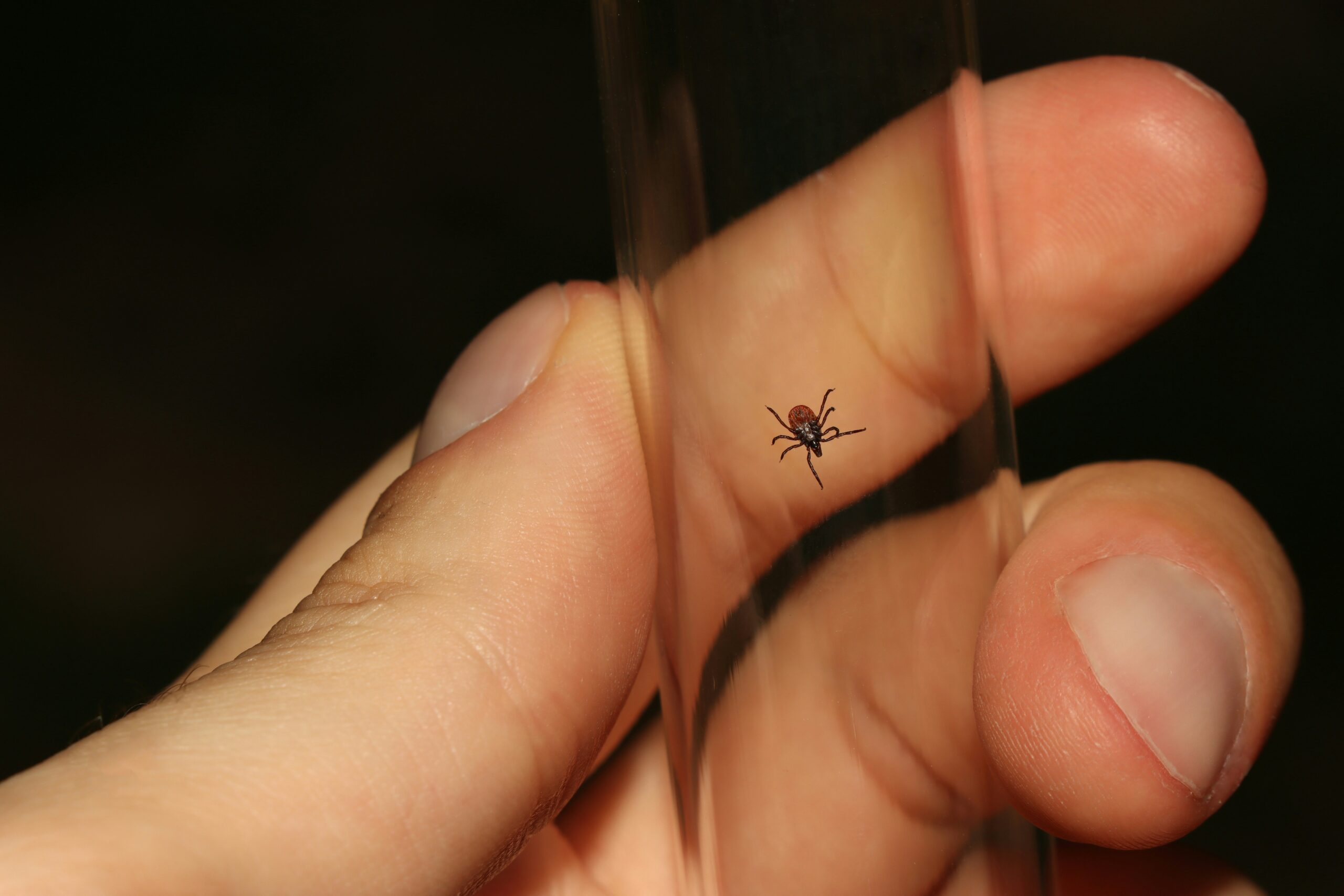OCTOBER 2015
WHAT’S NEW
TDON’T LET FOOD LABELS GIVE YOU INDIGESTION
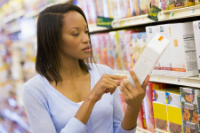
REMEMBER THESE HELPFUL TIPS:
- Nutrition information is provided for one serving of a food or beverage. Many products contain more than one serving. If a serving size is one cup, and you eat two cups, then you must double the calories, fat, sugar, and other ingredients to get an accurate estimate of how much you’ve eaten. If you’ve eaten a smaller portion than what is on the label, calculate accordingly.
- Pay special attention to the amount of sugars (including carbohydrates) in one serving. This is especially important if you have diabetes (or other health concerns) that require you to monitor sugar intake or the glycemic index of foods.
- Check out the amount of fat, especially saturated fat, in one serving. Fats contribute to many chronic health problems. Trans fats are also labeled because they are known to contribute to “bad cholesterol,” which contributes to heart disease. Choose foods that are low in these fats. However, some foods, like nuts, have high fat content, but the source of fat is actually good for the body- it’s not a saturated or a trans fat.
- Be aware that “0” does not mean zero! It means less than 5% per serving!
- In addition to understanding the nutrition label, take a look at the list of ingredients. This is the most important part of the food label, rather than counting calories, ensure the quality of the ingredients and product before consuming. If you cannot pronounce the words that are listed on a food label, it’s likely coming from chemicals and processed (unnatural) elements that are not healthy for the body. Some of the items you want to avoid include:
- Preservatives including BHA, BHT, brominated products
- GMO – genetically modified organisms, common in corn and soy derivatives
- Dextrose
- Xanthan gum
- Hydrocarbons (pesticides PCB, DDE, DDT)
- Soy and cottonseed oil
- Dyes (e.g., yellow dye no. 5, tartrazine)
- MSG – monosodium glutamate (common in canned foods and Asian cooking)
- Food allergens – if you or family members have a known allergy to peanuts, wheat, soy, or gluten
If you are in a hurry and can’t take the time to read labels, be sure to avoid packaged (bag, box, or bottle) foods. Instead, buy fresh foods and “eat a rainbow everyday” (e.g., fruits, veggies, nuts, seeds, cheese, yogurt). Also, choose water, tea, or juices with no sugar added.
Finally, pay attention to what’s happening in the news – in July 2015 the government proposed a new nutrition information panel for food labeling. The public is invited to provide comments.
REFERENCES
- David Katz, M.D. “Nutrition Detectives: Teaching Kids to Make Healthy Choices.”
- Pizzorno, J.E. Textbook of Natural Medicine. Fourth edition. St Louis, Missouri: Elsevier Publishing: 2014.
- United States Department of Agriculture. “Nutrition Facts Label.” Updated August 2006.
- United States Food and Drug Administration. “How to Understand and Use the Nutrition Facts Label.” Updated November 2004.
FOOD FOR THOUGHT. . .
“Variability is the law of life, and as no two faces are the same, so no two bodies are alike, and no two individuals react alike and behave alike under the abnormal conditions which we know as disease.” – William Osler
PUMPKIN
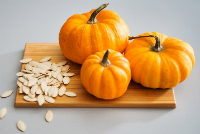
A member of the Cucurbitaceae family of vegetables (along with cucumber and squash), pumpkin is cultivated around the world for both its fleshy vibrant orange meat and seeds. It is a naturally low calorie (49 calories per one cup serving), yet filling food that offers the following health benefits.
HEALTH BENEFITS
- Pumpkin contains no saturated fats or cholesterol. It is rich in dietary fiber, antioxidants, minerals, and many antioxidant vitamins, including A, C, and E.
- It is also an excellent source of many natural polyphenolic flavonoid compounds such as beta-carotenes, lutein, and zeaxanthin. Carotenes convert into vitamin A inside the body. Zeaxanthin is a natural antioxidant that may offer protection from age-related macular disease.
- Pumpkin is a good source of the B-complex group of vitamins including niacin, vitamin B-6 (pyridoxine), thiamin, and pantothenic acid.
- It is a rich source of copper, calcium, potassium, and phosphorus.
- Pumpkin seeds provide dietary fiber and pack a powerful mix of protein, minerals, and vitamins: 100 g (1 cup) of pumpkin seeds provide 559 calories, 30 g of protein, plus folate, iron, niacin, selenium, and zinc.
REFERENCES
- Cho, E., et al. “Prospective Study of Intake of Fruits, Vegetables, Vitamins, and Carotenoids and Risk of Age-related Maculopathy.” Archives of Ophthalmology 122, no. 6 (June 2004): 883-92.
- The History Channel. “Pumpkin Fact Videos.”
- Medical News Today. “What Are the Health Benefits of Pumpkin?” Updated August 30, 2014.
- United States Department of Agriculture. “Pumpkin Nutrition Profile.”
- University of Illinois. “Watch Your Garden Grow: Pumpkin.”
- World’s Healthiest Foods. “Pumpkin Seeds.”
RECIPE: SPICED PUMPKIN BREAD
Yields: 2 loaves
Preheat oven to 350F
Butter and flour two 9x5x3 inch loaf pans
- 1.5 c. all-purpose flour (or gluten-free flour mix)
- 1.5 c. whole wheat flour (or gluten-free flour mix)
- 1 tsp ground cloves
- 1 tsp ground cinnamon
- 1 tsp ground nutmeg
- 1 tsp baking soda
- 1/2 tsp salt
- 1/2 tsp baking powder
- 2 c. raw sugar (or raw honey, or coconut sugar)
- 1 c. sunflower oil
- 3 large eggs (room temp)
- 15 oz. (1 can) pure organic pumpkin
- 1 c. chopped organic raw walnuts (optional)
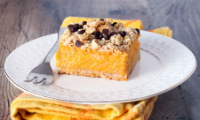
WHAT DO YOU REALLY KNOW ABOUT YOUR DIETARY SUPPLEMENTS?
To complicate matters, manufacturers of DS are not required to submit products to the scientific scrutiny of the FDA because DS are regulated as a food product, not a drug. The Federal Trade Commission regulates advertising of product claims, but that has nothing to do with the purity and quality of the pill you’re taking. The FDA has the authority to spot-check supplements (and to remove products that violate certain regulations) but is not required by law to test, or require testing, on all over-the-counter supplements.
Several private groups, as well as the Government Accountability Office (Natural Resources and the Environment Division) want more done to hold supplement makers accountable for the purity of their products. It’s a heated debate, but as more clinicians, consumers, and retailers call for standardized practices for testing, producing, and marketing DS before they go on the market, the more confident we all can be about what we’re buying.
BE AN INFORMED CONSUMER:
- Read labels and understand what the terms on the label actually mean (see diagram above). Ingredients you don’t want to see include fillers, dyes, lead, dextrose, and titanium dioxide.
- If it sounds too good to be true, it probably is.
- Look for a Quality Assurance seal of approval: Good Manufacturing Practices (GMP) and the U.S. Pharmacopeia (USP).
- Purchase products from your healthcare provider or a reputable company.
- Research the product and company on the Internet: National Center for Complementary and Alternative Medicine (NCCAM). Look for product recalls and scams: FDA Health Fraud Scams & Tainted Supplements.
Your best source of educational support is your health care practitioner.
REFERENCES
- ConsumerLab Independent Testing of Supplements
- Council for Responsible Nutrition. “One Dozen Tips for Consumers.”
- Harel, Z., et al. “The Frequency and Characteristics of Dietary Supplement Recalls in the United States.” JAMA Internal Medicine 173, no. 10 (2013): 929-930. doi:10.1001/jamainternmed.2013.379.
- National Institutes of Health Quality Assurance Program
- U.S. Government Accountability Office. “Dietary Supplements: FDA Should Take Further Actions to Improve Oversight and Consumer Understanding.” Published January 29, 2009.
- U.S. Pharmacopeial Convention. “USP & Dietary Supplement Manufacturers.”
WHAT’S REALLY IN YOUR HERBAL REMEDY?
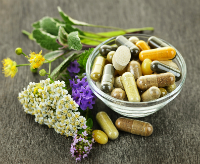
Before buying herbal supplements, do your homework and investigate potential benefits and side effects. Follow our tips below to help identify quality herbal supplements. Before taking an herbal supplement, talk your health practitioner- especially if you take other medications, have chronic health problems, or are pregnant or breastfeeding.
QUALITY FACTORS
Look for products that indicate standardized extracts; no fillers, preservatives or additives; naturally harvested; fair-trade and sustainable manufacturing practices.
QUALITY CONTROL
Quality control (QC) refers to processes for maintaining the purity of a product. Without QC, there is no assurance that the herb contained in the bottle is the same as what is stated on the outside. One of the key solutions to the QC problem that exists in the United States is for manufacturers and suppliers to adhere to standardized manufacturing practices.
Products should indicate they are third-party tested. Look for a USP (U.S. Pharmacopeia) seal of approval. Check products (and product recalls) on these websites: Council for Responsible Nutrition, ConsumerLabs, and the National Institutes of Health Dietary Supplement QA Program. Check the product website for more information.
REFERENCES
- Cleveland Clinic. “Herbal Supplements: Helpful or Harmful?” Reviewed December 2013.
- Mayo Clinic. “Herbal Supplements: What to Know Before You Buy.”
- Newmaster, S., et al. “DNA Barcoding Detects Contamination and Substitution in North American Herbal Products.” BMC Medicine 11 (2013): 222.
- Pizzorno, J.E. Textbook of Natural Medicine. Fourth edition. St Louis, Missouri: Elsevier Publishing: 2014.
- U.S. Pharmacopeial Convention. “USP & Dietary Supplement Manufacturers.”
CUPPING: A TRADITIONAL CHINESE THERAPY
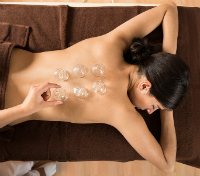
Like acupuncture, cupping follows the lines of the meridians. There are five meridian lines on the back, and these are where the cups are usually placed. In TCM, cupping is believed to purge toxins and help to restore qi (life force energy) by opening the meridian channels so that qi flows throughout all tissues and organs to promote healing and vitality.
WHAT HAPPENS IN A CUPPING SESSION?
In a traditional cupping session (“dry” cupping), glass cups are warmed using a cotton ball that has been soaked in alcohol, is lit, and placed inside the cup. Burning a substance inside the cup removes all the oxygen, which creates a vacuum. Next, the practitioner turns the cup upside-down and places it over a specific area on the body. The back, chest, abdomen, and buttocks are the most common sites on which the cups are applied. The vacuum effect anchors the cup and pulls the skin upward inside the cup. Cups are left in place for 5-10 minutes (sometimes longer depending on the condition being treated). Several cups may be placed on a patient’s body at the same time. Small amounts of medicated or herbal oils may also be applied to the skin just before the cupping procedure; this allows a practitioner to move cups up and down meridians (“gliding” cupping).
In addition to “dry” cupping, some practitioners also use “wet” or “air” cupping. In “air” cupping, after the cup is applied to the skin, a suction pump is attached to the cup to create a vacuum. In “wet” cupping, the skin is punctured before treatment. When the cup is applied and the skin is drawn up, a small amount of blood may flow from the puncture site, which is believed to help remove harmful substances and toxins from the body.
WHAT DOES IT TREAT?
In China, cupping is used primarily to treat respiratory conditions such as bronchitis, asthma, and congestion; arthritis; gastrointestinal disorders; and for management of pain and swelling. Clinical studies are limited, though there is growing interest from researchers. For now, there isn’t conclusive data on the effects of cupping for specific health concerns.
IS CUPPING SAFE?
While cupping is considered relatively safe for most people, it can cause swelling and bruising on the skin where the cups were applied. Bruising may last anywhere from a few days to two weeks. You may feel sore after treatment, but this will subside within 24 hours after a session.
Cupping should not be performed on individuals with inflamed skin, high fever, or convulsions, or with persons who bleed easily or who are pregnant. It’s wise for you to learn about the credentials of any practitioner who offers cupping treatments.
REFERENCES
- Cao, H., X. Li, and J. Liu. “An Updated Review of the Efficacy of Cupping Therapy.” PLOS ONE 7, no. 2 (2012). doi:10.1371/journal.pone.0031793
- Chinese Cupping. “History of Chinese Cupping.”
- Institute for Traditional Medicine. “Cupping.”
- Kim, J., et al. “Cupping for Treating Pain: A Systematic Review.” Evidence-based Complementary and Alternative Medicine (2011).
- Mehta, P., and V. Dhapte. “Cupping Therapy: A Prudent Remedy for a Plethora of Medical Ailments.” Journal of Traditional and Complementary Medicine 5, no. 3 (February 2015): 127ñ134.
GUIDING PRINCIPLES

First Do not Harm

Identify and Treat the cause

Healing Power of Nature

Doctor as Teachers

Treat the Whole

Prevention is best Medicine
Follow us on instagram
BLOG
Become an educated consumer with our Indigo Blogs and prevent dis-ease.
Our Doctors have been featured in:
